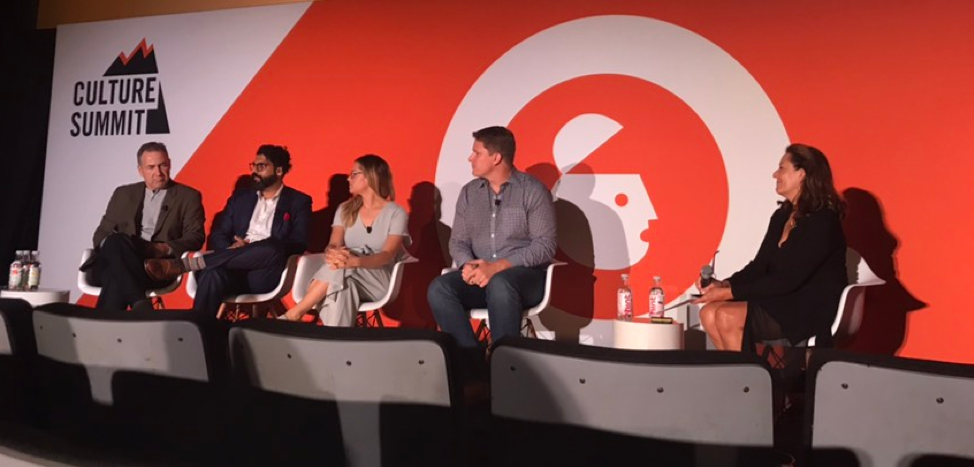
When it comes to audio and the incredible variety of ways and places that listeners currently tune in, the question of how to best communicate messages that resonate with consumers is top of mind for marketers and advertisers. As media fragmentation continues at a rapid pace, people are inundated with a constant stream of media throughout the day. Now, more than ever, that audience is looking for a more authentic message from brands and content that connects on an emotional level.
During Advertising Week, held Oct. 1-4, 2018 in New York, Brad Kelly, Managing Director of Nielsen Audio, was featured on an “Audio Messaging and How to Do It Right” panel as part of the Future of Audio Summit sponsored by NPR. The panel was hosted by Gina Garrubbo, President and CEO of National Public Media.
To the audience of mostly advertising and marketing executives, Brad affirmed that there is a “huge opportunity” to improve radio creative. Nielsen Consumer Neuroscience is looking at attention processing, emotional engagement and memory activation to scientifically quantify what makes a good message and what resonates with consumers. “People are understanding that this is the untapped alternative pathway into the human mind that we can take better advantage of.”
Research from Nielsen Consumer Neuroscience shows that simple storylines with a focused message that consumers can relate to, taking listeners on an emotional journey and integrating the brand is most effective.
When it comes to viewing and listening behaviors, TV and radio are complementary media. Brad said, “We are finding now that TV and radio are not competing media but rather, are highly complementary. The combination of radio and TV makes for a stickier message.” He continued, “audio and TV are entering neural pathways in a different way. The audio portion augments, supplements, and amplifies the visual, whether it’s video or static text and we are starting to understand the interplay between the two. The whole is greater than the sum of the parts.”
The numbers show that the reach of radio continues to be strong and this is critical as more consumers flock to subscriber services and younger consumers are cutting the cord. Brad pointed out that while 44% of Americans are considered “light” TV viewers and represent only 9% of viewership with TV, radio reaches 92% of these difficult-to-target consumers, including Millennials.
The relevancy of radio extends not just to people but to brands as well.
“If you listen to broadcast radio today you will hear advertisements by brands that have not been on the air in decades,” said Brad. “Podcasting is on fire right now. When we drop audio into the puzzle, it completes the picture.”
Delving further into the topic of brain activity, emotion and what drives engagement, Pranav Yadav, CEO, Neuro-Insight U.S., said that emotion does not have a direct correlation with human behavior unless it goes into someone’s long-term memory. He explained that what drives behavior is long-term memory, and emotion may be a part of it. Elaborating more, he said that when listening, visuals are being created by the listener based on imagination, and they speak in the way that the listener is most familiar with. The understanding and engagement that results is a consequence of the individual imagination of the listener that relates to the content thereby increasing engagement.
Additionally, Patrick Givens, VP, VaynerSmart, VaynerMedia, and Liz Anderson, Senior Manager, Communications, Capital One, shared specific examples with the audience illustrating the power of audio and informative storytelling and why it’s an integral part of their strategy.
The Future of Audio Summit was a part of Advertising Week, and featured additional panels on the unfolding trajectory of audio, as leaders in media, marketing, and research discussed this changing landscape and the unique challenges and opportunities for brands and advertisers.
